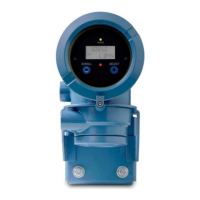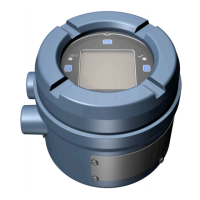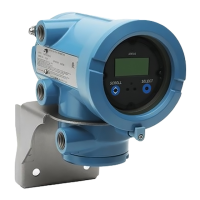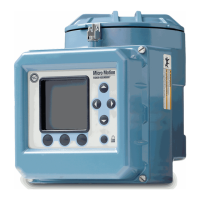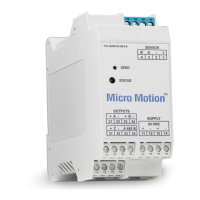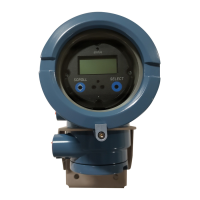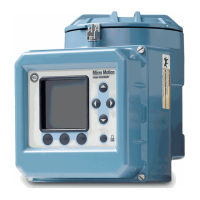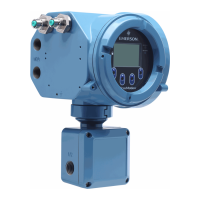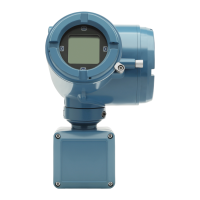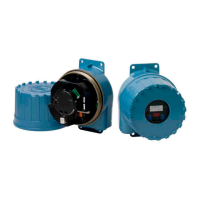Configuration and Use Manual 149
Troubleshooting
Measurement Performance TroubleshootingCustody TransferCompensation Measurement Performance TroubleshootingCustody TransferCompensation Measurement Performance TroubleshootingCustody TransferCompensation Measurement Performance TroubleshootingCustody TransferCompensation
12.21 Checking the upper and lower range values
A saturated mA output or incorrect mA measurement could indicate a faulty URV or LRV. Verify that
the URV and LRV are correct and change them if necessary. See Section .
12.22 Checking the frequency output scale and method
A saturated frequency output or an incorrect frequency measurement could indicate a faulty frequency
output scale and/or method. Verify that the frequency output scale and method are correct and change
them if necessary. See Section 6.6.
12.23 Checking the characterization
A transmitter that is incorrectly characterized for its sensor might produce inaccurate output values. If
the meter appears to be operating correctly but sends inaccurate output values, an incorrect
characterization could be the cause.
If you discover that any of the characterization data are wrong, perform a complete characterization.
See Section 6.2.
12.24 Checking the calibration
Improper calibration can cause the transmitter to send unexpected output values. If the transmitter
appears to be operating correctly but sends inaccurate output values, an improper calibration may be
the cause.
Micro Motion calibrates every transmitter at the factory. Therefore, you should suspect improper
calibration only if the transmitter has been calibrated after it was shipped from the factory.
The calibration procedures in this manual are designed for calibration to a regulatory standard. See
Chapter 10. To calibrate for true accuracy, always use a measurement source that is more accurate
than the meter. Contact the Micro Motion Customer Service Department for assistance.
Note: Micro Motion recommends using meter factors, rather than calibration, to prove the meter
against a regulatory standard or to correct measurement error. Contact Micro Motion before
calibrating your meter. For information on meter performance verification, see Chapter 10.
12.25 Checking the test points
Some status alarms that indicate a sensor failure or overrange condition can be caused by problems
other than a failed sensor. You can diagnose sensor failure or overrange status alarms by checking the
meter test points. The test points include left and right pickoff voltages, drive gain, and tube
frequency. These values describe the current operation of the sensor.
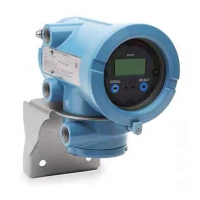
